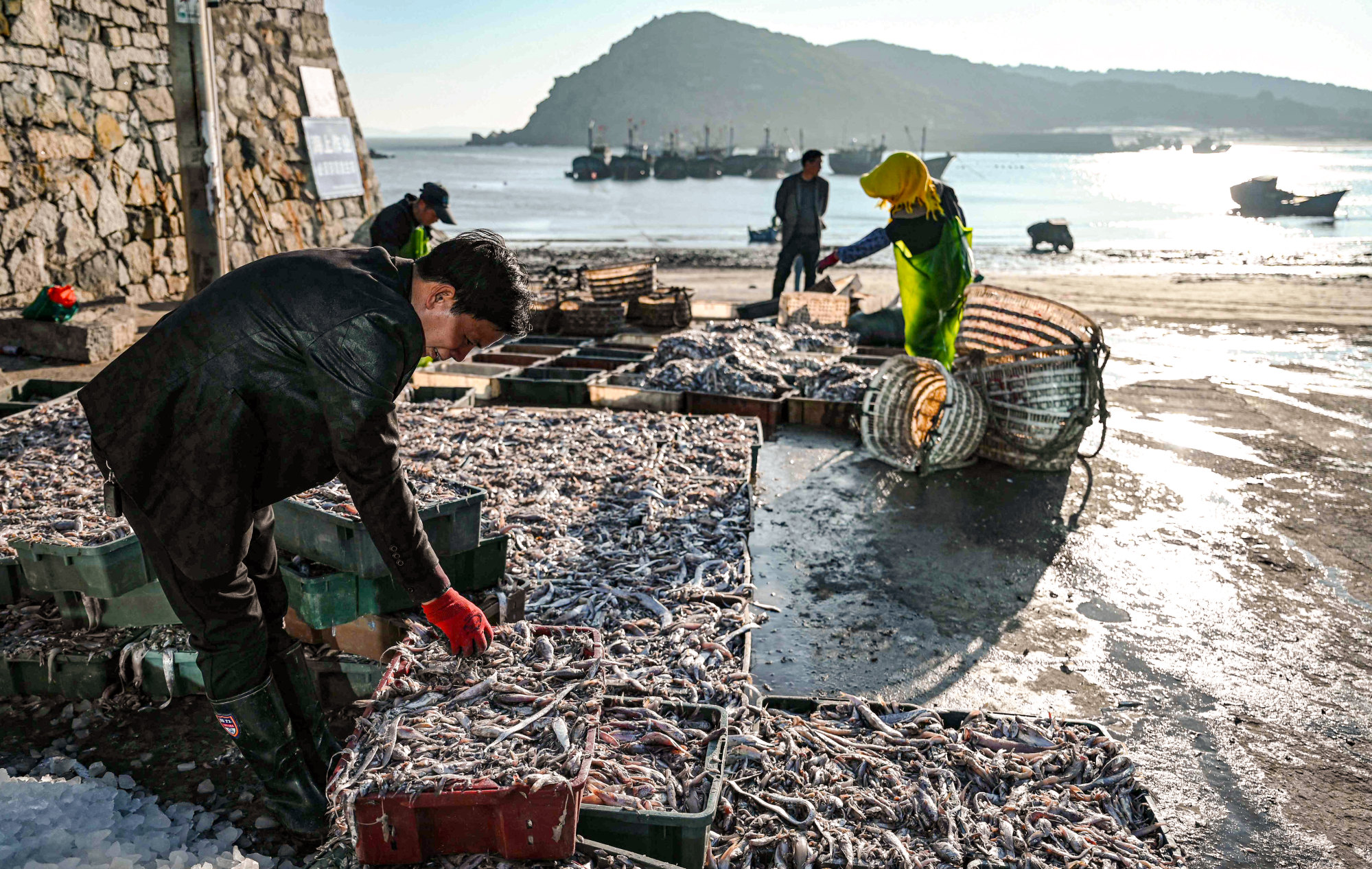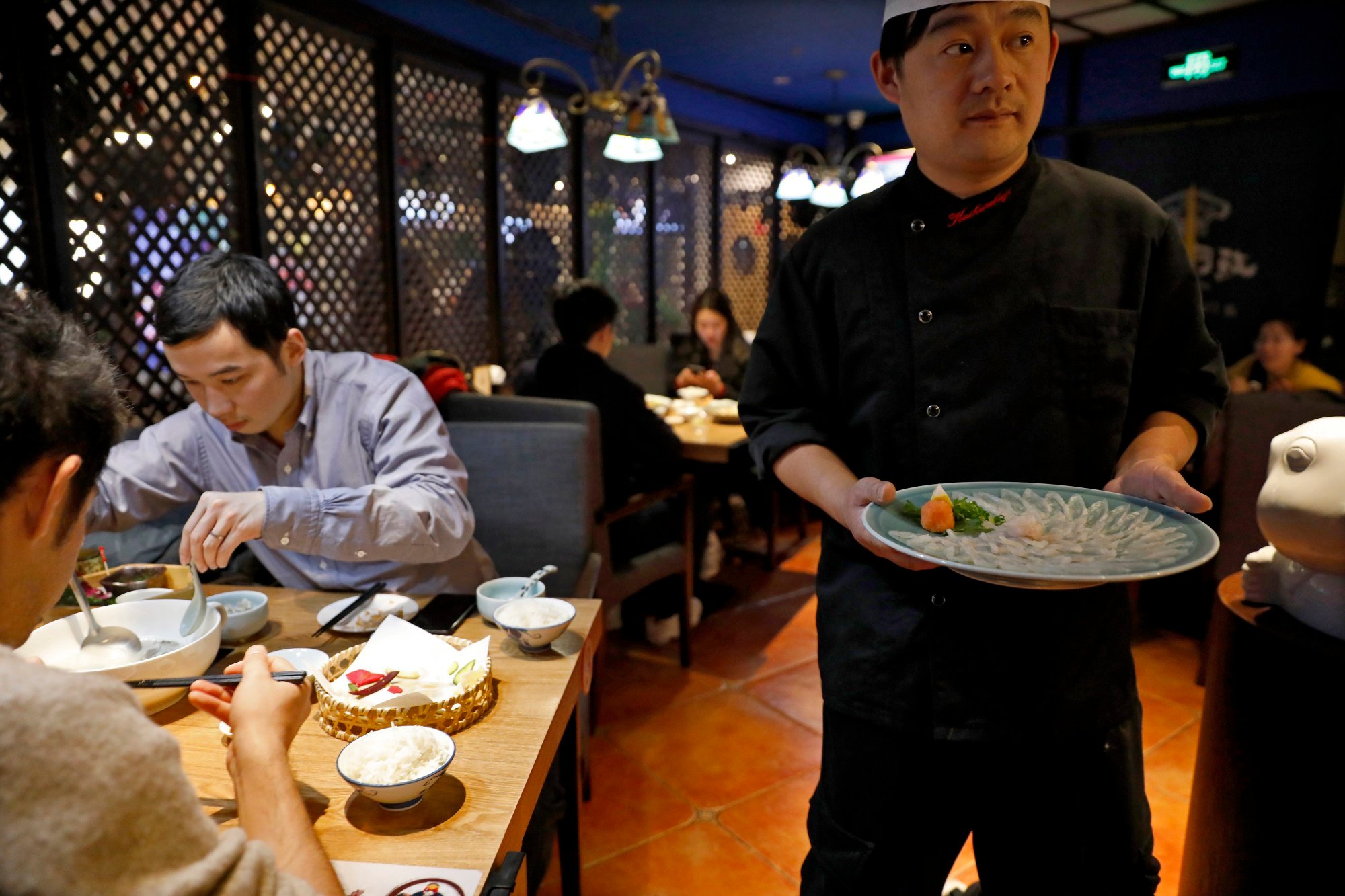China has surpassed the US in the amount of daily dietary protein available to its population – an important indicator of a modern quality of life, and one that some commentators and politicians in the West thought would be impossible to achieve.
According to the latest data from the United Nations Food and Agriculture Organization (FAO), China overtook the US in 2021, reaching a daily supply of 124.61 grams (4.39oz) of protein per capita.
In the same year, Americans had access to 124.33 grams (4.38oz). For comparison, Japan’s daily protein supply per capita was 91.99 grams (3.24oz). It was 108.31 grams (3.82oz) in South Korea, 113.63 grams (4oz) in the United Arab Emirates, and 119.55 grams (4.21oz) in Australia.
Do you have questions about the biggest topics and trends from around the world? Get the answers with SCMP Knowledge, our new platform of curated content with explainers, FAQs, analyses and infographics brought to you by our award-winning team.
Covering 187 countries from 2010 to 2021, the FAO’s food balance sheets measure national supply based on the amount produced plus the quantity imported, giving snapshots of what is potentially available for consumption.
India, which has a population akin to China’s, boasted a mere 70.52 grams (2.48oz) of daily protein supply per capita in 2021, according to the FAO food balance sheets.
Among the other top five populous developing nations, Indonesia reached 79.75 grams (2.81oz), with Pakistan trailing at 70.77 grams (2.49oz) and Nigeria at 59.08 grams (2.08oz).
While China has previously pulled ahead of the US in a range of living standard measures – including life expectancy, healthcare insurance coverage, high-speed rail and 5G – the challenge to outpace American agriculture has been far steeper.
With its 1.4 billion population more than four times that of the US, China’s rise to Western levels of food security was believed by some to be impossible without dooming the Earth to an unsustainable future.
American environmental analyst Lester Brown predicted in his 1995 book Who Will Feed China? that the Asian giant would eventually have to import so much grain to feed its population that it could precipitate an unprecedented rise in world food prices.
The theory gained traction among some politicians, with former US president Barack Obama using it to justify his China policies in an interview on Australian television in April 2010.
“If over a billion Chinese citizens have the same living patterns as Australians and Americans do right now, then all of us are in for a very miserable time, the planet just can’t sustain it,” Obama told the ABC’s 7.30 Report.
While Obama’s intention might have been to spur Beijing’s climate change efforts, his comments elicited strong dissatisfaction in China, where they were widely perceived as a justification for containing Chinese growth and development.
Instead, China has built up its protein supply not only through imports but also intense animal husbandry, as well as agricultural and aquacultural developments that have put some of its food products among the best in the world.
China is now the world’s top aquaculture nation and is increasingly turning to agriculture technology and new scientific breeding methods to ensure higher and more stable output of crops that can be used for animal meat production.
But the Chinese people are also showing that it is possible to increase protein consumption without eating as much meat as the Americans, which also benefits the planet.
In addition to recognised health benefits, plant proteins also have an environmental advantage. Each 1kg of soybeans produced provides 56 per cent more protein – and 48 times fewer carbon emissions – than its equivalent in beef, for example.
According to the FAO food balance sheets, animal products like meat, fish, eggs, and dairy dominated US protein supply in 2021 by 69 per cent. In contrast, China’s supply of animal protein was around half that of the United States.

China’s protein supply contained more vegetal sources, with vegetables, fruits, beans, nuts, seeds, and wheat, oat, rice, barley, maize and their products making up 60.5 per cent.
The FAO data showed that China’s daily per capita protein supply rose by 15.81 grams (0.55oz) from 2010 to 2021, with around two-thirds derived from vegetal products. Nearly all of the 5.31 grams (0.18oz) US increase was attributed to animal products.
While Chinese per capita meat consumption lags significantly behind the US, China is the world’s largest consumer of animal products, making up 27 per cent of the global total in 2021, because of the size of its population, according to a McKinsey & Company report.
In 1944 the journal Science published an estimate attributing just 5 per cent of China’s protein intake to animal proteins, a figure that had grown to around 26.96 per cent by 1990.
By 2019, animal proteins accounted for 49.2 per cent of China’s protein intake, according to a Chinese study published last year in the peer-reviewed journal Environment, Development and Sustainability.

Hon Ming Lam, a professor of life sciences at the Chinese University of Hong Kong, said animal product consumption started to surge in China in around 2000.
“In the old days, the Chinese diet was less animal meat-oriented. Consuming animal meat is a symbol of wealth. Parallel to the growth of China’s economy, more people could afford to eat meat,” he said.
But the growing of feed crops led to more land and resource use, as well as greenhouse gas emissions, creating a problem for sustainability, he said.
“China imports a huge amount of soybean each year, most of it for oil pressing and animal feed, Lam pointed out. “Plant-based proteins – without complicated processing – will be best for large populations,” he added.
Lam worked with researchers in China, Vietnam, England and Canada to examine how willing people would be to alter their diets to help mitigate climate change, with their results published in the peer-reviewed journal Cell Reports Sustainability in February.
Lam and his fellow study authors surveyed individuals in China, Japan and Vietnam and found “many Asian consumers still prefer traditional diets featuring rice and pork over alternative food baskets”.
UN projections suggest that on present trends meat consumption in China could increase by 21 per cent from 2010 levels by the end of this decade.
“Although animal-based protein consumption has increased in Asia, the consumption of beef has not reached the levels observed in Western markets”, which means policy action could help reduce this trend.
The Chinese government is encouraging people to reduce their consumption of animal products and to eat more plant-based proteins.

Other recommendations include vegetables in every meal, daily servings of soy and grain products, more fish and less highly processed meats, according to the Chinese Centre for Disease Control and Prevention.
Plant-based proteins have always played a role in Chinese cuisine, especially in soy-based foods like tofu which has been eaten in China for more than 2,000 years.
According to the FAO food balance sheets, China’s top 10 protein providers were wheat and rice and their products, followed by vegetables, pork, poultry, eggs, freshwater fish, soybeans, groundnuts, and milk, excluding butter.
Iceland topped the world in protein supply at 145.62 grams (5.13oz), while the Democratic Republic of Congo had the lowest, at 28.59 grams (1 oz), a decrease of nearly 3 grams (0.105822oz) since 2010, the FAO found.
More from South China Morning Post:
- China looks to South African food exports as way of reducing reliance on US and Australia
- Chinese now more likely to blame being poor on inequality, unfair system, study shows
- The viral ‘apple fungus’ that’s intriguing the Chinese internet – and scientists
- China faces diluted early-season rice harvest as floods drench crops in farming hubs
- Asia’s rice production hit by ‘very aggressive’ weedy varieties, with up to 80% of harvest loss
For the latest news from the South China Morning Post download our mobile app. Copyright 2024.





